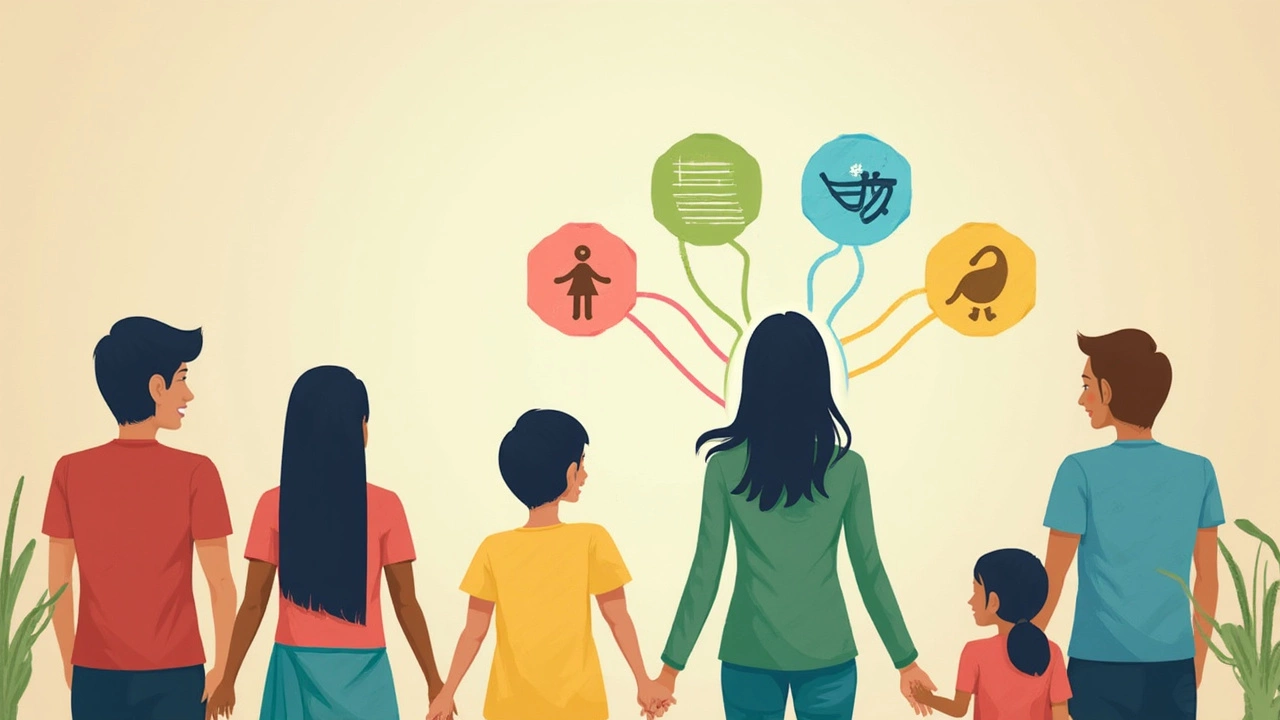Thousands of couples each year put their hopes into a petri dish, figuring out if science and a bit of luck will give them their long-awaited baby. If you’ve peeked into the world of IVF (in vitro fertilization), you’ve probably Googled “what are the real odds?” at least a few dozen times by now. For most, the numbers can feel like a roller coaster— one stat gives you hope, the next makes you feel like the chance is slipping away. Behind every number, there’s someone’s heart on the line. It’s more than just medicine and numbers; it’s about dreams, and sometimes, disappointment.
What IVF Really Is and How It Works
Ok, let’s pull back the curtain for a second. IVF isn’t magic, but it’s as close as medical science can get. Basically, it takes eggs out of the ovaries, mixes them with sperm in a lab (instead of the bedroom), waits for embryos to develop, and then puts the best of the bunch back into the uterus. Simple on paper, stressful in reality.
For many, the journey starts with hormone injections that bump up egg production. Picture trying to convince your body to produce more eggs than it would in a normal cycle—easier said than done. Doctors monitor follicles, tweak medications, and when the timing is right, they harvest the eggs in a procedure that’s not quite surgery but isn’t quite painless, either.
Next comes fertilization. Fresh sperm (or frozen, or donor) meets the retrieved eggs under a microscope. In some cases, a single sperm is injected directly into each egg—this is called ICSI (Intracytoplasmic Sperm Injection). Depending on how things go overnight, fertilized eggs continue to grow for 3 to 5 days. By this stage, you’re on the edge of your seat; you might start with 15 eggs but end up with just a handful of good embryos by the end. That’s the start of understanding why the odds are never 100%.
Once the best embryo is chosen and transferred back into the uterus, it’s a waiting game to see if it implants and leads to a pregnancy. Not every embryo sticks. Not every positive test becomes a baby. That’s why “odds” are so important.
If you’re wondering if IVF includes genetic testing— sometimes it does. Preimplantation genetic testing (PGT) helps doctors pick embryos less likely to have chromosomal issues, which can help with success rates, especially for older women or couples with known genetic risks.
IVF Success Rates: The Numbers You Need to Know
So, let’s cut to the chase. What are your real chances?
Here’s the thing: the average IVF success rates are best understood in the context of your age. According to the CDC’s 2024 Assisted Reproductive Technology report, the average live birth rate per embryo transfer looked something like this:
| Age (Woman) | Live Birth Rate per Embryo Transfer |
|---|---|
| Under 35 | 42-47% |
| 35-37 | 38-41% |
| 38-40 | 27-33% |
| 41-42 | 15-18% |
| Over 42 | 5-8% |
So, for women under 35, the odds are roughly 40%. By the time you hit 40, it’s down to about 30% each try, and over 42, it’s less than 10%. These numbers mean that, for many, IVF won’t work on the first attempt. In fact, most women need more than one cycle, so emotionally (and financially), it’s wise to prepare for a marathon, not a sprint.
One thing to point out: these rates are per embryo transfer, not per cycle. Sometimes, a single “cycle” produces multiple embryos, leading to more than one transfer. That can boost your overall odds across the journey.
Also, it helps to know IVF success isn’t just about age. Many clinics love to publish their best numbers—ask for age-specific and diagnosis-specific stats when you talk to them. The numbers say you’re not alone if it takes two, three, or even four tries.
If you’re using donor eggs, the odds shoot up—frequently matching the under-35 group, no matter your age. That’s because the eggs are, well, younger, and younger eggs are less likely to have errors in their DNA.

What Impacts Your IVF Odds: The Factors No One Tells You About
Your doctor probably ran through the basics: age, egg quality, sperm health. But what about the wild cards?
Polycystic ovary syndrome (PCOS), unexplained infertility, endometriosis, and male factor issues all play a part. Some of these are treatable, some aren’t. Sometimes, a simple tweak, like adjusting hormone doses or a special kind of egg retrieval, can tip the scales.
Lab quality matters a lot. Not all clinics are created equal. The best labs have super-strict protocols, experienced embryologists (the people growing your embryos), and up-to-date technology for freezing and thawing embryos without damage. If you walk into a clinic that feels outdated, trust your gut and shop around.
There’s also embryo selection. Many clinics now use tools like time-lapse imaging or AI-based algorithms to pick the embryos with the best shot. Preimplantation genetic testing (PGT) can help weed out embryos with the wrong number of chromosomes—these are less likely to turn into a healthy baby. If you can afford it, it’s worth asking about.
Even lifestyle stuff counts. Smoking, extreme drinking, obesity, and untreated thyroid troubles chip away at your odds. My wife Anjali gave up her nightly glass of wine during our IVF journey. It wasn’t easy, but we wanted to boost every percentage point possible.
What about stress? There are rumors that stress single-handedly destroys your odds. It’s not that simple. Stress is unavoidable, but studies do show that getting enough sleep, staying active, and finding support can help you cope—and that’s half the battle.
How to Increase Your Chances: Tips That Work (Not Just Hype)
Let’s be honest—there are a million tips out there, but not all are worth your time (or money).
- Optimize your health before IVF. If you smoke, stop. Aim for a healthy weight; even losing 5-10% of body weight can improve results for women with PCOS or obesity. If your partner’s sperm quality is low, cutting out smoking, reducing alcohol, and wearing looser underwear can actually help.
- Find a clinic that tracks outcomes. Some clinics are more interested in marketing than medicine. Look for places that voluntarily report to organizations like SART (in the US) or HFEA (UK), and compare their age-related outcomes, not just blended averages.
- Talk about add-ons cautiously. From “embryo glue” to assisted hatching, clinics sometimes offer extras. There’s no silver bullet, but if you’re thinking about extras, check the actual data, not just the sales pitch.
- Mental health is part of the process. If you’re feeling overwhelmed, therapy or talking to support groups can be more helpful than pretending everything’s fine. Several studies (including a 2022 German trial) found that couples who felt less isolated and more supported were likelier to stick through multiple cycles.
- Don’t shy away from supplements, but do your homework. Folic acid is non-negotiable, but vitamin D, CoQ10, and omega-3s get mixed reviews. Always ask your fertility specialist before loading up your cart.
- Consider single embryo transfer (SET). Transferring more embryos might sound like a faster path to pregnancy, but it also ups your risk for twins or triplets—which pose health risks to mother and babies. Multiple studies, especially from Scandinavian countries, support single embryo transfer for maximizing success without raising risks.
- If possible, freeze embryos for later. Vitrification (the new way of freezing embryos) is almost as good as fresh transfers, letting you double dip from a single good cycle in some cases.
If it helps, keep a journal. Ira, my daughter, is the result of round three. That journal is a lifeline on tough days, tracking little wins, shots, and setbacks alike.

Real Stories, Real Numbers: What the Stats Don’t Tell You
Here’s something nobody told me until Anjali and I were knee-deep in our own IVF journey: the stats are just a guide. Each cycle feels like flipping a coin, but sometimes, it takes more than luck or science. Persistence is the X-factor you don’t see in the tables.
Let’s look at some context. According to a 2023 European Society of Human Reproduction report, about 65-70% of couples under 38 who stick with IVF for up to 5-6 cycles go home with a baby. That’s way better odds than the per-cycle numbers suggest, but it means playing the long game.
Costs can throw a wrench in persistence. In the US, a single IVF cycle can run $12,000-$15,000 or more—not including medications or add-ons. Still, many clinics now bundle several cycles at a discount, or offer “shared risk” programs that refund part of your money if you don’t walk away with a baby.
It’s easy to get lost comparing your story to others. One friend got pregnant on her first try. Another went through six cycles, two clinics, and a couple of miscarriages before her twins. Try not to stack your journey up against someone else’s—there’s often more happening behind closed doors.
My tip: surround yourself with people who get it. Online groups, local meetups, or counseling can help normalize the ups and downs. Plenty of couples—like us—felt that heartbreak and hope can live side by side.
As for Ira, she’s living proof that statistics aren’t destiny. Some families get their happy ending sooner, some later. But knowing the odds, being realistic, and arming yourself with facts can make the whole journey a little less overwhelming.
